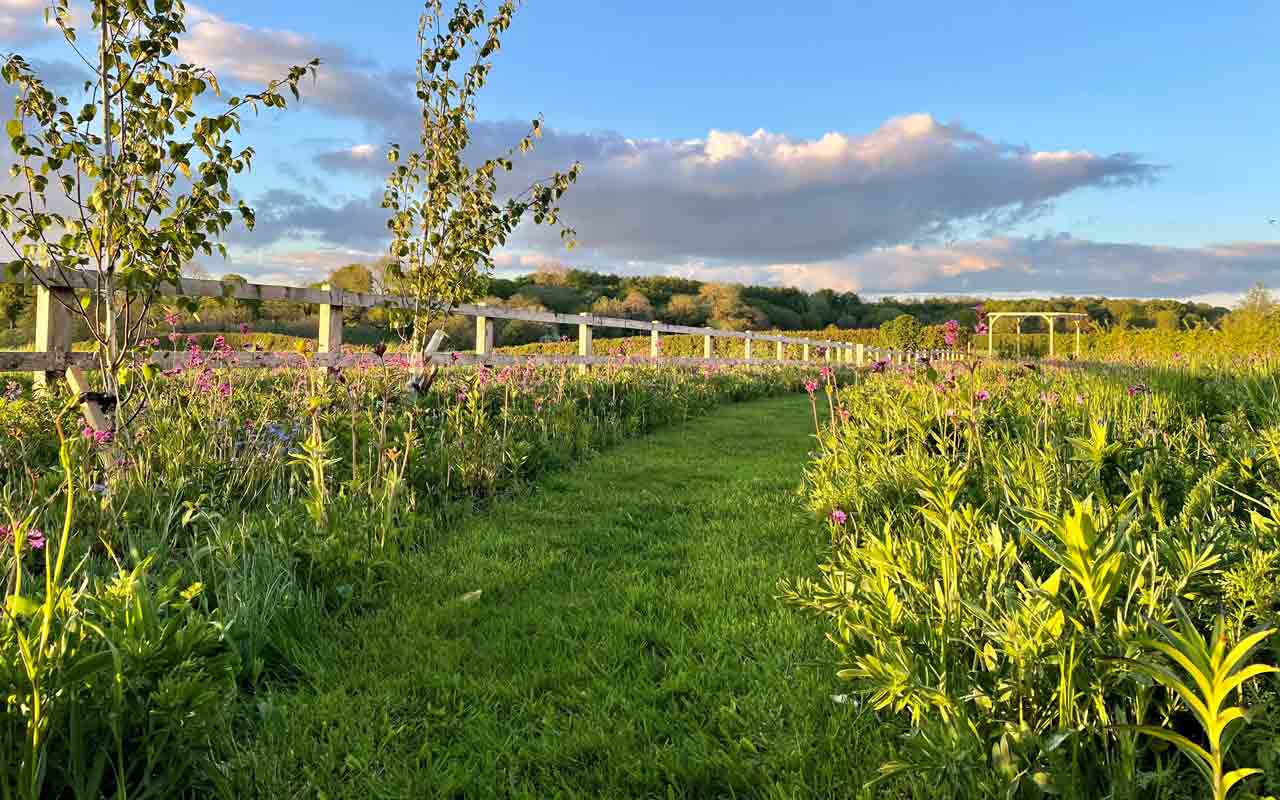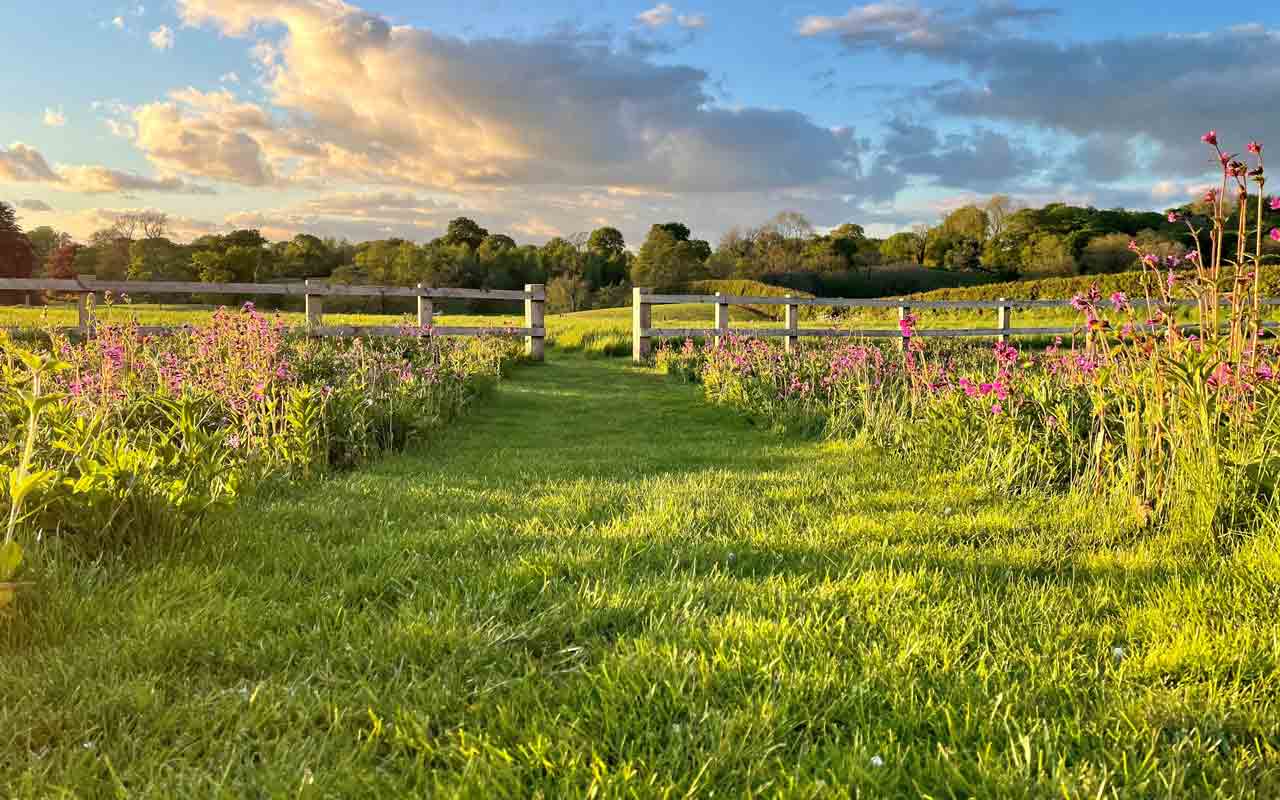Menu
Wildflowers have become quite a trend in gardens in recent years. Not only is this kind of naturalistic planting attractive and relatively easy to care for, it can do wonders for attracting wildlife too. In October 2021, Hambrooks Garden Landscaping colleague, Sam Foster, attended a course to learn more. Here’s how he got on.


I think we are all aware that interest in wildlife has definitely been growing. More and more of our customers don’t just want a beautiful garden but one that is attractive to birds and insects too. I was keen to learn more about wildflower seeds and turf as these are definitely a great way for us all to support the diversity in our gardens.
Wildflower Turf are a local family company, also based in Hampshire. From a farming background, they began growing turf commercially in 1982 but diversified into wildflowers in 2003. They supply a range of products to suit a wide range of situations – from recreating habitat for Great Crested Newts in Popley to establishing a drought-tolerant green roof on Alder Hay Children’s Hospital. Fortunately, they also run courses to teach landscape designers like me how to get the best out of them!
I can see that, for our landscape customers, it will be the wildflower turf that I will be designing with most often. Like any turf, it requires careful watering when it’s newly laid but it will show much faster results than sowing seeds or using their ‘Meadowscape Pro’ seed and soil mixes.
Not many clients are likely to have the space to dedicate to a full wildflower meadow so I’m expecting to design wildflower areas within garden schemes. It doesn’t matter if you can only dedicate a few square meters, the good news is that it will still attract wildlife. It’s also great for hilly or banked areas, as you’re mowing it less often than ordinary grass, and it can work really beautifully under trees or to blend in with the wider landscape around your garden.
Preparation is key and similar to laying normal turf or grass seed. Any existing turf, plants or weeds should be removed and the ground rotavated and levelled as much as possible; this will give a much better finish. The turf is then laid in the usual way and needs to be watered regularly while it establishes.
Maintenance is relatively minimal once your wildflowers have established. Mid-season, around early June, it’s worth chopping the whole area down to about half the height. This might seem drastic for a short time but it really does encourage everything to regrow with more flowers and more impact! Then, at the end of the season, when flowers are visibly dead, you need to mow it to take away dead foliage and allow space for next year’s seeds to grow. (You might need to start with something like a hedge trimmer before you can get your mower on it!)
I enjoyed learning about how the turf and seeds are grown and the mix of plants in each mix. Wildflower Turf can even do a bespoke mix if you have any special requests. I also learnt how wildflower mixes can not only attract wildlife (and help to save our struggling bee populations) but improve drainage and help soil retention too. And I’d really like to have a go at a green roof; I don’t think we’ve been asked for one of those before but I’d love to try it!
Sam
Further reading:
Find out how Sam started as an Apprentice here at Hambrooks
Wildflower turf is great for wildlife – read more about wildlife gardening here
Hambrooks garden design, landscaping & garden maintenance throughout Hampshire for over 50 years.

